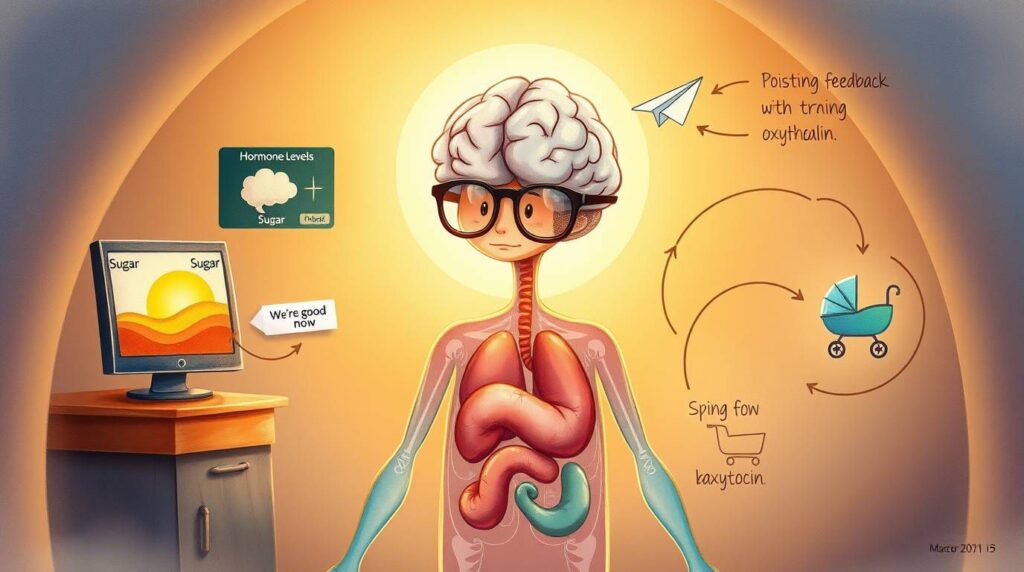How do hormones regulate feedback mechanisms?
You’re here — which means you’ve probably read something like, “Hormones control feedback loops to maintain homeostasis,” and your brain just whispered, “Bro what now??” 😩
Don’t worry — we’re tossing the textbook lingo out the window. Let’s break this down like you and I are chilling in a café, trying to figure out why our bodies act like overthinking parents who never stop checking in on us. Let’s gooo.
—
How Do Hormones Regulate Feedback Mechanisms?
Alright, so first up — what’s a feedback mechanism?
Think of it like your body’s version of a smart thermostat. It’s always watching, adjusting, balancing — trying to keep everything juuust right. And hormones? They’re the messengers running back and forth between the brain and your organs, delivering updates and instructions.
So now the real question: How does this “thermostat” system work?
Let’s break it into two super chill types:
— Negative feedback (the chill parent)
— Positive feedback (the dramatic hype crew)
—




🧠 Negative Feedback: “Okay, we’ve got enough. Chill.”
This is the most common one, and it’s basically your body going,
“Hey, we’re good now. No need to keep producing more.”
⏳ Example: Body temperature or blood sugar
Say your blood sugar rises (like after eating a chocolate cake).
The pancreas (your behind-the-scenes MVP) releases a hormone called insulin.
Insulin tells your cells: “Yo, suck in that sugar!”
Blood sugar levels drop.
Once things are back to normal, the pancreas gets the memo: “Okay, we’re good.”
So it slows or stops releasing insulin.
Boom — balance restored.
This loop = negative feedback. It fixes things and then shuts itself off.
—
🧬 Another Classic: Thyroid Hormone Check-In
Hypothalamus: “Hey pituitary, can you tell the thyroid to make some T3 and T4 hormones?”
Pituitary: “Sure thing! sends TSH (thyroid-stimulating hormone)”
Thyroid: makes hormones
T3/T4 levels rise…
Hypothalamus and pituitary: “Alright cool cool, let’s chill the TSH now.”
Balance maintained = negative feedback again!
—
🎉 Positive Feedback: “MORE MORE MORE!!”
This one’s rarer but way more intense.
Instead of calming things down, it’s like your body says, “This is great — do it again! And again! Keep it going!”
⏳ Example: Childbirth
During labor, the hormone oxytocin is released.
It causes the uterus to contract.
Those contractions push the baby down… which causes more oxytocin to be released… which causes even more contractions.
It’s a wild hormone loop until — BOOM — baby’s born.
Then the loop finally stops. Dramatic, but efficient.
—
🔁 So… Why Does the Body Use These Loops?
Because balance is everything.
Too little or too much of anything (like hormones, sugar, salt, even water) and things get messy — or dangerous. Feedback mechanisms keep your inner chaos under control, using hormones like tiny little life coaches.
—
🧃 Imagine This Like a Group Chat
- Brain: “Hey, how’s the vibe down there?”
- Gland: “Too much hormone action, boss.”
- Brain: “Say less. We’re cutting it off.”
✂️ Boom — balance.
Or in positive feedback:
- Brain: “Hey, this is working!”
- Body: “I know right?! Let’s go full throttle!!”
🚀 Until it’s done.
Hormones = the messengers
Feedback = the logic
Your body = the control freak (but in a good way)
—
📌 Disclaimer:
This easy version is meant to help you understand the concept better. If your exam or teacher expects a textbook explanation and you write this one instead, we’re not responsible if it affects your marks. Use this for understanding, not copy-pasting.
—
🔗 Related Articles from EdgyThoughts.com:
🌐 External Resource:
Want the biology-textbook version (with all the hormone names and diagrams)?
https://en.wikipedia.org/wiki/Feedback_mechanism
How to Stay Motivated to Study Daily?
https://edgythoughts.com/how-to-stay-motivated-to-study-daily/
Why is consistency more important than motivation?
https://edgythoughts.com/why-is-consistency-more-important-than-motivation/





